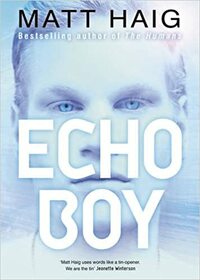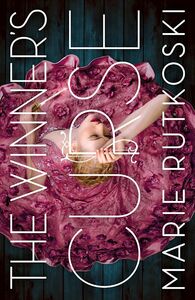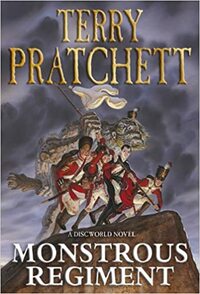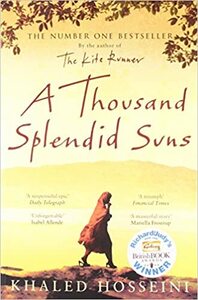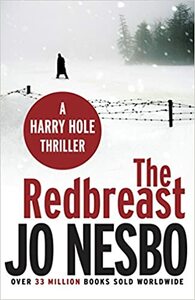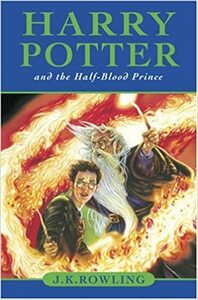Take a photo of a barcode or cover
patchworkbunny's Reviews (2.12k)
Audrey’s world is full of technology which is at the extremes of where we’re heading now. I can see where a lot of it has coming from logically, but there is so much change from now, it doesn’t feel like Earth. I did like how southern Europe has become arid and Spain was a blistering desert, with remote warehouses supporting the new industry but not much else. Also, the Resurrection Zone was somewhat relatable to London Zoo (it helps it’s in Regent’s Park). I felt the scenes in the zoo were some of the most thought-provoking and powerful.
For the most part, the narrative is Audrey’s but there are a few chapters from Daniel’s point of view, which felt a bit more contemplative. Audrey’s suffering from grief at the start of the book and uses patches to numb the pain. There is a fair amount of time devoted to this, which reflects Matt Haig’s experiences with depression. Even Daniel, could be described to have had depression at one point if you project his thoughts onto a human mind.
This might well be better received by those that haven’t read much robot science fiction. Somewhere in my head I was expecting another The Mad Scientist’s Daughter and emotionally this fell a bit short. Younger readers who can become enamoured with the future tech and action will undoubtedly enjoy it. But in a book about robots, I need some ethical dilemmas or moral ambiguity. The people who mistreated robots were horrible people and I think they enjoyed it no matter if they were sentient or not. We already anthropomorphise our technology and it doesn’t look like us (I feel I have to be polite to my boyfriend’s car otherwise the door won’t open). A robot that is nearly identical to us, would be a hard thing to act cruel towards, even if was an unfeeling machine. I think it needed more conflicted characters.
Actually I’m not sure what the Echoes really are. They are introduced as androids but seem to be mostly biological. I wanted a bit more on their history rather than the other tech in their world. There seemed a lot to fit in and the pace was a bit on the slow side because of this.
I think delayed instalove is becoming a thing. Just because it doesn’t happen at the start of the story, doesn’t mean it doesn’t feel like instalove when there’s no real emotional build up. There needs to be a believable like going on before love. It’s especially hard to believe when it’s an otherwise awkward coupling.
Review copy provided by publisher.
For the most part, the narrative is Audrey’s but there are a few chapters from Daniel’s point of view, which felt a bit more contemplative. Audrey’s suffering from grief at the start of the book and uses patches to numb the pain. There is a fair amount of time devoted to this, which reflects Matt Haig’s experiences with depression. Even Daniel, could be described to have had depression at one point if you project his thoughts onto a human mind.
This might well be better received by those that haven’t read much robot science fiction. Somewhere in my head I was expecting another The Mad Scientist’s Daughter and emotionally this fell a bit short. Younger readers who can become enamoured with the future tech and action will undoubtedly enjoy it. But in a book about robots, I need some ethical dilemmas or moral ambiguity. The people who mistreated robots were horrible people and I think they enjoyed it no matter if they were sentient or not. We already anthropomorphise our technology and it doesn’t look like us (I feel I have to be polite to my boyfriend’s car otherwise the door won’t open). A robot that is nearly identical to us, would be a hard thing to act cruel towards, even if was an unfeeling machine. I think it needed more conflicted characters.
Actually I’m not sure what the Echoes really are. They are introduced as androids but seem to be mostly biological. I wanted a bit more on their history rather than the other tech in their world. There seemed a lot to fit in and the pace was a bit on the slow side because of this.
I think delayed instalove is becoming a thing. Just because it doesn’t happen at the start of the story, doesn’t mean it doesn’t feel like instalove when there’s no real emotional build up. There needs to be a believable like going on before love. It’s especially hard to believe when it’s an otherwise awkward coupling.
Review copy provided by publisher.
Fantastic first half but got a bit put of by all the twists and turns nearing the end. Full review to follow.
The first of the series to be translated into English but is the third in the series. I'm normally a stickler for reading in order but learning Norwegian might be a bit extreme! Still the story is still enjoyable and I learned a bit about the Norwegian involvement in WW2. Some of the characters are a bit cliched but thought the translation seemed to be well done.
The Path is a virtual reality based on one boy’s memories. Lona Sixteen Always is one of the children on The Path, living Julian’s life as if it were her own. Her only experiences as herself are the moments when she’s disconnected from the system for calisthenics. There, she talks to Finn, a boy who is a few years ahead of her on The Path, sharing their memories that are identical. But one day, Lona goes Off-Path and must learn to live in a world where anything can happen.
The concept behind Stray stems from what to do with foster children. It seems like Path came from a place of good intentions. Children who were orphaned or came from abusive backgrounds could live out a life deemed to be perfectly ordinary. There would be no more shuffling them from home to home, no one taking advantage of them or neglecting them. The lack of individuality or choice is the price to pay for a happy childhood.
When the children reach 18, they are reintroduced into the world, where they will have to find out who they really are at last. Can they cope without Julian? Lona is off schedule, younger than the eighteeners who are given extra time to adjust. But it soon becomes clear, that it’s not as simple as removing them from the virtual reality.
The lack of individuality is continued through with the children’s names. Lona and Finn aren’t real names, they are reference numbers which relate to their date of birth and location within the compound. They might have the love of Julian’s parents on Path, but in reality, they aren’t treated as children with their own hopes and fears. They are a number, to be processed through the system until they reach adulthood, which is often how foster children see themselves anyway.
Whilst Lona’s brain chemistry might have been a bit different, I never felt like she was the heroine about to swoop in and save the day. Her character is suitably naïve and she struggles with interactions. I loved the scene where she is eating real foods for the first time. She may have the memories of eating but they’re not the same as experiencing it.
It didn’t really go into gender identity though which is surprising. They are all growing up as a boy, wouldn’t that be strange to adjust to for the girls? Does the short time they are in calisthenics allow them to understand their own bodies? It’s hinted at that some of Julian’s memories are edited out, but it’s hard to edit out all the times he’s aware of his penis.
The concept behind Stray stems from what to do with foster children. It seems like Path came from a place of good intentions. Children who were orphaned or came from abusive backgrounds could live out a life deemed to be perfectly ordinary. There would be no more shuffling them from home to home, no one taking advantage of them or neglecting them. The lack of individuality or choice is the price to pay for a happy childhood.
When the children reach 18, they are reintroduced into the world, where they will have to find out who they really are at last. Can they cope without Julian? Lona is off schedule, younger than the eighteeners who are given extra time to adjust. But it soon becomes clear, that it’s not as simple as removing them from the virtual reality.
The lack of individuality is continued through with the children’s names. Lona and Finn aren’t real names, they are reference numbers which relate to their date of birth and location within the compound. They might have the love of Julian’s parents on Path, but in reality, they aren’t treated as children with their own hopes and fears. They are a number, to be processed through the system until they reach adulthood, which is often how foster children see themselves anyway.
Whilst Lona’s brain chemistry might have been a bit different, I never felt like she was the heroine about to swoop in and save the day. Her character is suitably naïve and she struggles with interactions. I loved the scene where she is eating real foods for the first time. She may have the memories of eating but they’re not the same as experiencing it.
It didn’t really go into gender identity though which is surprising. They are all growing up as a boy, wouldn’t that be strange to adjust to for the girls? Does the short time they are in calisthenics allow them to understand their own bodies? It’s hinted at that some of Julian’s memories are edited out, but it’s hard to edit out all the times he’s aware of his penis.

